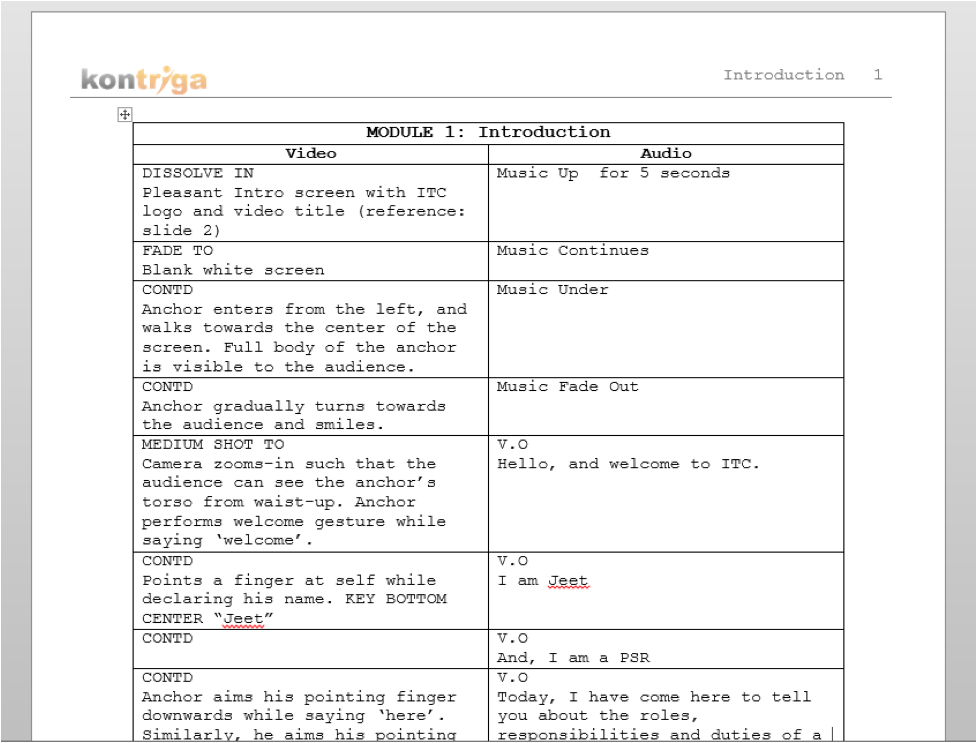What You Really Need To Know To Start Your First Instructional Design Project
Most books and online courses on Instructional Design include an elaborate description of theoretical constructs such as ADDIE model, Merrill’s principle of instruction, Dick and Carey model, etc. These theoretical constructs are intended to serve as recipe for creating an ideal learning program which ensures maximum retention and highest level of skill development.
In many ways, theoretical constructs like the popular ADDIE model are akin to lofty management theories which are seldom used in real life scenarios. In fact, I was able to successfully complete my first Instructional Design project without any knowledge of fundamental Instructional Design theories. And I am of the opinion that Instructional Design theories developed by eminent researchers are of little value when you’re actually creating a course/training program.
This article is intended to help aspiring Instructional Designers get on the road to building courses/training program which provide a great learning experience to students/learners. here are the 5 key skills you need to know to start your first Instructional Design project.
1. Subject matter expertise.
In the movie The Next Karate Kid, Mr. Miyagi offers his protégé Julie Pierce a life-changing advice by telling her that “Ambition without knowledge is like a boat on dry land”. And the same holds true for Instructional Designers. If you want to build a great course/training program, it is essential to have deep understanding of the subject around which you’ll be creating some instructional content. Even if you’re interested in offering Instructional Design service as a consultant, I recommend that you only take-up projects on topics that you find interesting. Working on Instructional Design projects of your interest gives you the motivation to put-in the hard work that it takes to acquire subject matter expertise.
2. The ability to put yourself in the shoes of your learners.
Empathizing with the learner is crucial for the success of your course/training program, and you’ll have to put in a great deal of effort in identifying the areas of the subject matter which your learners will find difficult to grasp. Expert Instructional Designers have an instinct for identifying the areas of the subject matter where learners are likely to stumble, and inculcating this sort of instinct is what it takes to become a good Instructional Designer. After all Instructional Design is all about creating an enjoyable and stress-free learning experience for your learners.
3. The ability to write A/V scripts.
Instructional Designers create learning programs where instructions are imparted though video tutorials. So, it’s essential for Instructional Designers to master the art of writing AV (Audio Visual) scripts.
Here’s an excerpt from an AV script that I wrote for my very first Instructional Design project.
An AV script contains instructions for animation artists and video editors. It includes the script to be enacted by the anchor and the voice over that’ll play in sync with an animated sequence/screencast.
An AV script is the starting point of the video production process. A well-structured AV script helps you imagine the video in great detail. It enables all members of the production team to understand their respective roles, and helps them work collaboratively towards building the video.
4. The ability to direct video shoots and audio recording sessions.
Building an instructional video is very much like movie making and it requires you to be able to think and act like a director. Video shoots and audio recording sessions help generate the essential components of an instructional video, which are later fused together with animation sequences/screencasts to create the final video.
Even professional anchors and voice over artists require several takes to enact the script with right modulation. So, putting yourself in director’s shoes is all about having the instinct to eek-out the best performance from your artists.
5. The ability to manage post production process.
When it comes to building an instructional video, post production phase is where all the action occurs. So, it’s essential for Instructional Designers to have a good understanding of the post production process, so they can choose the right software tools for the job and hire people with the right technical expertise.
Having a working knowledge of various software tools like Photoshop, Illustrator, After Effects, Captivate, and Articulate is essential, because it helps you speak the language that graphic designers, animators and video graphics understand. In fact, software tools like Captivate and Articulate allow Instructional Designers to produce a video without any technical assistance.








